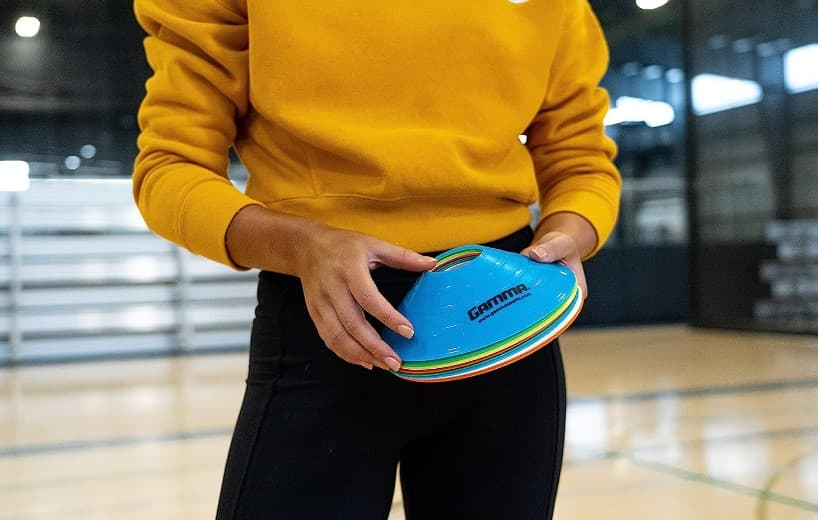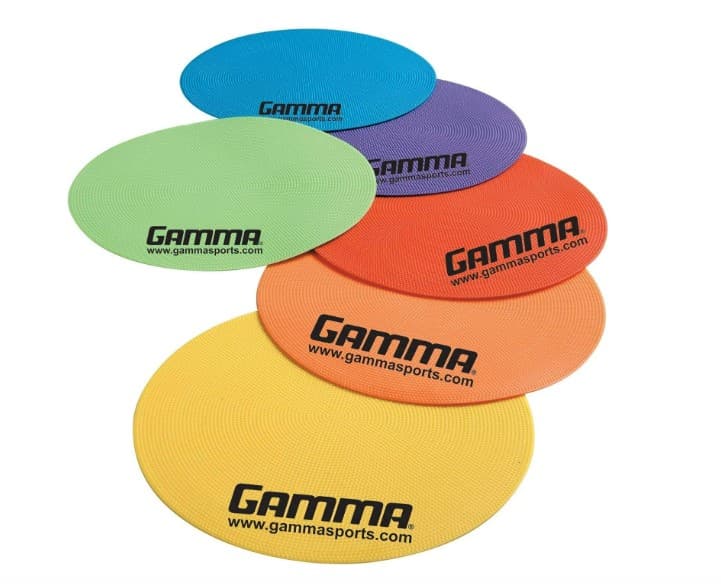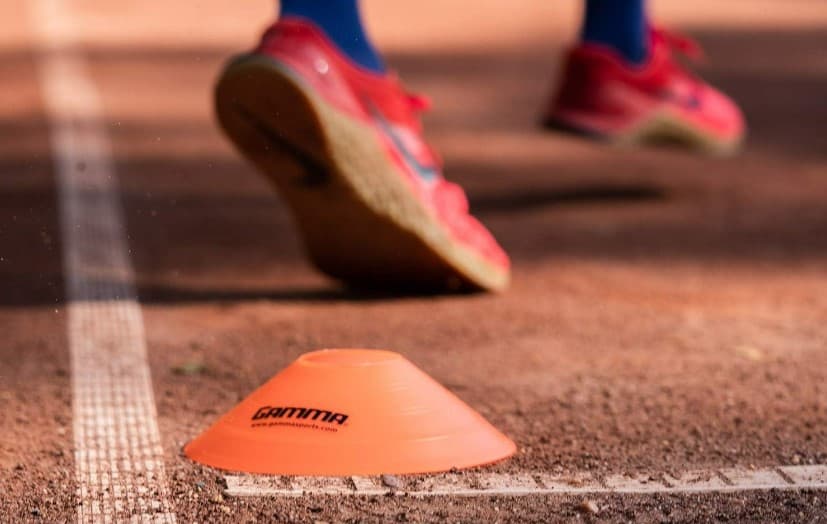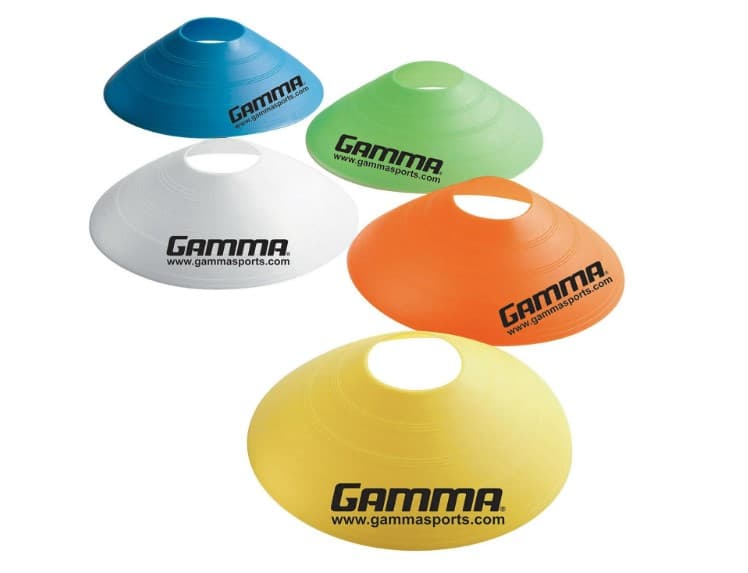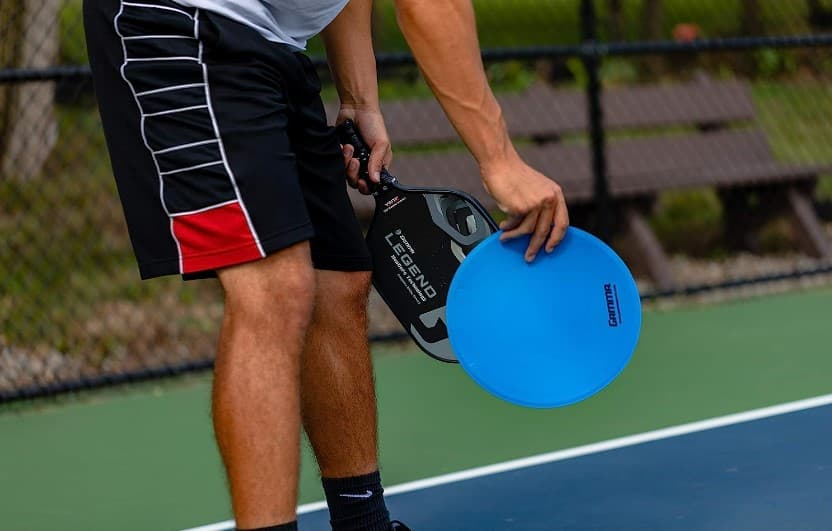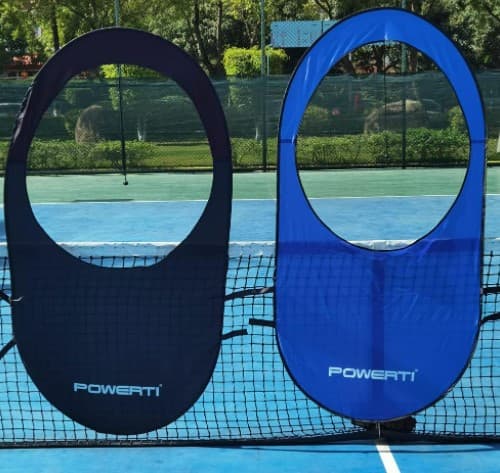The Sport of Pickleball
In recent years pickleball has exploded in popularity with people from all over the world eager to play this exciting and fun game. One of the reasons for pickleball’s popularity is that it offers an excellent full-body workout.
Players must use their arms to swing the paddle, their legs to move around the court, and their core muscles to maintain balance. Additionally, playing pickleball can improve hand-eye coordination, reaction time, and stamina.
The Benefits of Practicing with Targets
Practicing with targets helps players improve their accuracy and consistency on specific shots. When you have a target to aim for during practice drills you can focus on hitting your shots in a particular area or location instead of just striking the ball randomly across the court. Using targets allows players to concentrate on specific aspects of their game like shot placement or spin control.
They can also practice hitting different types of shots like groundstrokes or volleys while aiming at specific targets. Practicing with targets makes training more challenging than simply hitting back-and-forth rallies without any goals in mind.
By incorporating targets into practice sessions players can develop better muscle memory which they can apply during real games. This is why practicing pickleball using targets is an effective way to improve overall game performance.
Setting Up Targets for Pickleball Practice
Types of Targets Available
When it comes to practicing your pickleball game with targets, there are a few different types of targets you can choose from. Cones are a popular option and can be used to create a variety of target areas on the court. The best targets in my opinion are rubber circle spot targets or flexible plastic cone targets. Net height targets are also useful for practicing the height of your shots.
You can also use hula hoops or bullseye targets which are typically made out of plastic or rubber and come in various shapes and sizes. Some players even create their own DIY targets, such as using painted pieces of plywood or PVC pipes.
How to Set up Targets on the Court
Once you’ve chosen the type of target you want to use you’ll need to properly set it up on the court. Depending on the type of target, this may involve placing them at specific locations around the court or positioning them in a particular way. For example, if using cones you might place them in each corner of the service box to practice serving accuracy.
When positioning your targets take into consideration any existing lines or boundaries on the court. You don’t want your targets interfering with gameplay or causing confusion for other players sharing the space. If you’re practicing alone with a pickleball ball machine, place the targets in the exact location you’re aiming for.
Tips for Ensuring Safety While Using Targets
It’s important to prioritize safety when practicing with targets on the pickleball court. Make sure that all players are aware that there will be targets in use and give them plenty of space while setting them up and executing drills.
Also make sure that any equipment used (such as cones or hoops) is securely placed so it doesn’t move during play and present a tripping hazard. If using DIY targets made out of something like PVC pipe, ensure they’re sturdy enough not to cause injury if bumped into accidentally.
Always remember that when setting up pickleball practice drills that involve multiple people aiming at specific areas on the court, communication is key. Clearly communicate with your partners about what you’re aiming to achieve in each drill and where targets will be positioned so everyone is on the same page.
Types of Target Drills for Pickleball Practice
Dinking Accuracy
Dinking involves carefully placing shots over the net at a slow pace, aiming for specific areas on the opponent’s side. Dinks are often used during games to set up a winning shot or force an error on your opponent’s side.
Practicing dinks using target drills can improve accuracy when aiming for specific spots on the court. To do this drill players should set up multiple targets short in their opponent’s side of the court (as close to the net as possible).
Each target represents an area where they want to place their dink shot successfully. Players should then take turns trying to hit each target accurately from different parts of their side. This drill will help improve your touch and feel of the ball.
Groundstroke Accuracy
Groundstrokes make up a lot of shots during a pickleball game so practicing groundstroke accuracy is crucial for success. This drill requires setting up various targets deep in your opponent’s side of the court. Deep meaning close to the baseline.
Players can place 3 targets, one in each baseline corner and one in the center right within the baseline. Players can practice either forehands or backhand strokes going cross court or down the line focusing on depth within the court. Keeping your opponent deep in the court will always put them in a defensive position and allow you to control the point.
Multiple Targets at Once
This drill involves setting up targets on different sides of the court to create challenging scenarios for players. For instance, players can set up targets at the service court, frontcourt, and backcourt.
Players then serve or hit the ball to one target and then continue hitting towards other targets in a specific sequence. For example, hit a dink at the service court target, then hit a groundstroke to the backcourt target, and then hit an overhead smash. This drill helps players improve their ability to switch between different types of shots while maintaining accuracy.
It also helps them improve their footwork, decision-making abilities under pressure, and overall range of shots. Incorporating target drills into your pickleball practice regimen can help you improve your accuracy, shot placement, consistency and take your game to a higher level.
Targeting Serve and Volley
Serve and volley is an essential aspect of pickleball gameplay so it’s vital to practice it! Setting up targets on the service court can help players improve their serve accuracy and add precision to their volleys.
The drill involves setting up targets at the opposite end of the court where the player serves from and targets close by in front of the net. The aim is to serve accurately into a target while moving forward towards the net.
Players should focus on hitting different targets with varying degrees of difficulty such as hitting cones or bullseyes. To improve volley precision, players should aim for closer targets located in front of them attempting to hit them while moving forward. Don’t forget to split step!
Advanced Target Drills for Experienced Players
Pushing the Limits
While target drills are an excellent way to practice and improve your skills, advanced players may find them less challenging over time. Fortunately, there are more challenging drills out there that can help them develop better shot placement and consistency.
One such drill is the “pushing the limits” drill. This drill involves setting up targets at varying distances and angles across the court and attempting to hit each one with specific shots. The goal is not only to hit all the targets but also to do so while pushing beyond your comfort zone. The best and safest way to practice these target drills is either with someone feeding you balls or with a pickleball ball machine.
Crazy 8's Drill
Another advanced pickleball target drill is called the “Crazy 8’s” drill which focuses on improving accuracy and agility in a fast-paced game setting. To set up this drill create two rows of four targets each on opposite sides of the court. Make sure that they are spaced apart enough to allow for quick movement between shots. Players then start from one row and move quickly across the court hitting each target in sequence before moving back down the other row.
Challenger Drill
The “Challenger” drill is a great way to improve shot placement while playing under pressure. In this drill, players start by hitting a ball into a specific target zone on one side of the court before sprinting over to hit another target zone on the opposite side of the court. They must continue this pattern until they have hit all targets in order without making any errors or missing any zones.
Advanced target drills like these can be challenging but highly effective in helping experienced players improve their skills further. By pushing beyond their comfort zone and practicing under pressure, players can develop better shot placement and consistency – two critical factors for success at competitive levels of play.
Benefits of Practicing with Targets in Pickleball
Practicing with targets in pickleball can provide numerous benefits for players including improved accuracy, better shot placement, and increased consistency. By using targets during practice drills players can hone their skills and develop greater precision in their shots. Targets provide a specific point to aim for which helps players to focus their attention and improve their shot accuracy. By aiming for a specific target during drills players are forced to pay closer attention to the placement and trajectory of their shots.
This increased focus can help them to adjust and refine their technique, leading to more accurate shots over time. In addition to improving accuracy, practicing with targets can also lead to better shot placement on the court. Instead of just hitting the ball back without a purpose, players can confidently move their opponents around the court by hitting their spots.
This gives players a strategic advantage over their opponents who struggle with placing shots effectively as well as moving around the court. With practice and repetition, hitting precise shots becomes second nature which ultimately allows players to execute advanced strategies more effectively during games.
Examples of Professional Players Who Use Target Practice
Many professional pickleball players incorporate target practice into their training routines as a way to sharpen their skills and stay competitive at the highest levels of play. For example, Simone Jardim – one of the world’s top-ranked female pickleball players as well as a pickleball coach – often uses target drills during practice sessions.
Jardim has credited her success on the court in part to her dedication towards improving her accuracy through targeted drills.
Another professional player who emphasizes target practice is Ben Johns – widely considered one of the best male pickleball players in history. In an interview with Pickleball Central, Johns explained that he uses cones and other targets extensively in his training routines as a way to “fine-tune” his game. He emphasized the importance of consistency in hitting specific areas of the court and noted that his target practice has helped him to improve his overall shot placement on the court.
Incorporating targeted drills into a regular pickleball practice routine can provide numerous benefits for players of all skill levels. By focusing on accuracy and shot placement, players can develop greater precision and consistency on the court – two crucial factors in achieving success in this competitive sport.
Conclusion
Whether you’re a novice or an experienced player, using targets can help take your game to the next level. Aside from the obvious skill development benefits of practicing with targets, it’s also a fun way to mix up your training routine. By breaking up the sometimes monotonous repetition of groundstrokes or serves with a target drill that challenges you in a new way, you may find that you enjoy practicing even more.
If you want to improve your pickleball game and have some fun while doing it, incorporate target drills into your practice regimen. With dedication and perseverance over time these drills will help sharpen your skills on the court and make you a stronger player overall.

